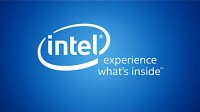U.S. Is Taking 10 Percent Intel Stake in Equity for Grants Deal
August 26, 2025
The U.S. government is taking a 10 percent stake in Intel in exchange for $5.7 billion in grants previously awarded, but not yet paid, to Intel under the U.S. CHIPS and Science Act and $3.2 billion awarded to the company as part of the Secure Enclave program. Intel had already received $2.2 billion from those funds, bringing the U.S. investment to $11.1 billion. However, the company’s mounting losses — $2.9 billion in Q2, a 57 percent increase over Q2 2024’s $1.61 billion loss — made it questionable as to whether the company could continue to fulfill terms for the funding without intervention. The Intel agreement marks the largest U.S. government equity deal for an individual tech firm.
“Under the agreement, the U.S. will receive 433.3 million shares of common stock — representing 9.9 percent of the fully diluted common shares in Intel,” writes Bloomberg.

The New York Times called the government’s Intel investment “the Trump administration’s latest effort to put its own stamp on the CHIPS Act, while trying to reinvigorate Intel.”
CHIPS and the Secure Enclave program, were enacted under the Biden administration as a national security initiative aimed at expanding domestic production of advanced semiconductors to benefit U.S. defense, businesses and consumers.
CNBC describes Intel as “the only American company capable of making advanced chips on U.S. soil,” and reports the government has a warrant “to buy an additional 5 percent of Intel shares if the company is no longer majority owner of its foundry business.”
In its Q2 earnings release Intel said it was “slowing construction” in two plants in Ohio, pushing completion scheduled for this year to 2030 or beyond, putting its CHIPS objectives in question. Tied to earnings, CNBC reported Intel was laying off 25,000 employees, 15 percent of its workforce.
President Trump, who took part in negotiations with Intel CEO Lip-Bu Tan, has said he felt the U.S. had a better chance of achieving its strategic goals if the grants were restructured as an equity stake.
Since Intel is not in financial crisis, the move is more of a “preemptive intervention” rather than a government “bailout,” as with 2008’s Troubled Asset Relief Program (TARP). Under TARP, the government bartered funding for equity. This case is unusual in that is that it is equity in exchange for “grants.”
The deal “turned the federal government into [Intel’s] largest shareholder,” reports The Washington Post, noting that in an SEC filing “Intel also said it could face litigation and possible backlash from foreign governments, business partners and even its own employees over the deal.”
Intel says the U.S. government won’t have a board seat or other governance rights. Its shares rose 5 percent on the news.
Related:
Did Trump Save Intel? Not Really, Reuters, 8/25/25
Trump Wants More Deals Like Intel’s, Worrying Business Community, Reuters, 8/25/25
Intel Warns U.S. Stake Could Hurt International Sales, Future Grants, Reuters, 8/25/25
The Terms of the U.S. Government’s 10% Intel Stake, Fortune, 8/25/25
Two Ways of Looking at the U.S. Government 10% Stake in Intel, EE Times. 8/25/25

No Comments Yet
You can be the first to comment!
Leave a comment
You must be logged in to post a comment.